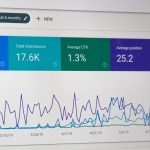
Backlinks are all the links that point to your website from external sources. These links not only drive direct traffic but also significantly influence how search engines like Google assess and rank your site. Understanding the nuances of backlinks—what makes them strong or weak—has empowered digital marketing agencies like Noble House Media to help businesses enhance their online presence and climb higher in search results. Let’s learn more about the intricacies of backlink profiles for your website’s SEO strategy.
Defining Backlink Profiles
A good backlink profile consists of all the links that point to your website from other websites. It is a key aspect of your site’s online presence, influencing how search engines perceive its relevance and authority. This profile is not just about the number of backlinks but also their quality, the diversity of their sources, and how they fit into your overall SEO strategy.
High-quality backlinks are links from reputable and relevant websites that enhance your site’s credibility, while a diverse link profile means having backlinks from various domains. Google and other search engines scrutinize backlinks to assess your website’s importance and rank it in search results. Understanding your backlink profile’s structure helps pinpoint strengths to capitalize on and weaknesses to address, making it a fundamental part of any digital marketing strategy.
Components of a Strong Backlink Profile
A robust backlink profile is more than just having numerous links; it’s about quality, diversity, and relevance. Here are the key components that constitute a strong backlink profile:
- High-Quality Backlinks: These come from reputable, relevant websites. High-quality links are typically editorially given as a natural part of content and not manipulated or paid for. They indicate to search engines that the content is valuable, enhancing the site’s credibility and authority.
- Referring Domains Variety: It’s beneficial to have backlinks from a wide range of domains rather than multiple links from a few sites. This variety shows search engines that multiple sources consider the content valuable, which can boost rankings.
- Relevance of Linking Sites: Links from websites that are relevant to your site’s industry or topic area are more effective than random links. This relevance tells search engines that your content is useful for readers interested in that specific subject matter.
- Link Anchor Text: The clickable text in a hyperlink should be relevant to the linked page’s content. Keyword-rich but natural anchor text can help improve rankings for those keywords.
- Dofollow vs. Nofollow: While ‘dofollow’ links pass on authority and are valuable for SEO, ‘nofollow’ links are essential too, as they contribute to a natural-looking link profile.
Understanding these components can significantly enhance your strategy to build a backlink profile that not only improves your website’s authority but also supports your overall SEO efforts.
Tools to Analyze Your Backlink Profile
Evaluating the strength of a backlink profile is crucial for any successful SEO strategy, and several tools are available to aid in this analysis. Google Search Console is a great resource, offering insights directly from Google’s perspective on how backlinks affect a site’s visibility and indexing. It provides data on the top linking sites, the most linked content on your website, and the anchor text used in those links.
For a more detailed analysis, SEO professionals often turn to specialized tools like Ahrefs, SEMrush, and Moz. These platforms offer comprehensive features that allow users to delve deeper into their backlink profiles, assessing the quality of each link, identifying potentially harmful backlinks, and tracking the growth of linking domains over time. Utilizing these tools effectively can give you a clear picture of how your backlink profile is contributing to your site’s overall SEO performance.
The Importance of High Authority Links
High authority links are the gold standard in building a strong backlink profile. These are links from websites that search engines regard as trustworthy and credible due to their established authority and relevance in a specific field. The impact of receiving a backlink from such a site is significant; it not only boosts the search engine ranking of the receiving site but also enhances its visibility and credibility.
When a high authority site links to your website, it passes on a portion of its reputational capital. This endorsement signals to search engines that your content is also trustworthy, which can dramatically improve your site’s position in search results. Moreover, high authority links drive relevant traffic to your site, increasing the likelihood of additional shares and links, thereby organically growing your backlink profile.
Obtaining these coveted links requires creating high-quality content that offers real value to readers. It might also involve reaching out to key influencers, engaging in community discussions, and consistently presenting yourself as a leader in your niche. Remember, the goal is not just to increase the number of backlinks but to enhance the overall quality of links pointing to your website.
How to Improve Your Backlink Profile
Enhancing a backlink profile can boost a site’s visibility and authority in search engine results. Here are key strategies to achieve a robust backlink profile:
- Focus on Quality Content: Create compelling, informative, and engaging content that naturally attracts backlinks. High-quality content that offers value is more likely to be linked by other reputable websites.
- Guest Blogging: Contributing articles to relevant, high-authority sites can lead to quality backlinks. Ensure the content is relevant to both your niche and the host site’s audience to maximize the impact.
- Engage with Relevant Niches: Build relationships with websites and brands within your industry. Engaging through comments, forums, and social media can lead to natural backlink opportunities.
- Use Resource Links from Trusted Sites: Reach out to websites that have resource pages where your content can add value. This method not only provides a backlink but also positions your site as a valuable resource.
- Monitor and Reclaim Lost Links: Regularly check your existing backlinks using tools like Google Search Console. Identify any lost or broken links and contact the site owners to restore them when possible.
Improving your backlink profile is a continuous process that involves strategic planning and ongoing engagement with your content and digital marketing community.
Common Pitfalls: Identifying and Removing Bad Backlinks
Navigating the terrain of a backlink profile isn’t just about accumulating as many links as possible; it’s equally important to curate a clean and relevant link environment. A bad backlink profile can include links from spammy or irrelevant websites, which potentially harm a website’s ranking rather than support it. Identifying these harmful links involves analyzing the quality and relevance of each referring domain.
Tools like Google’s Search Console provide data on who links to your site, allowing you to scrutinize unexpected or low-quality sources. Once identified, it’s crucial to take action by either manually requesting the removal of these links or using Google’s disavow tool to distance your site from them. This proactive approach ensures your backlink profile remains robust and beneficial, reflecting positively on your site’s integrity and relevance in search results.
The Role of Internal Links in a Backlink Profile
Internal links, or hyperlinks that point to other pages within the same website, play a critical role in shaping an effective backlink profile. While external links from other domains establish a site’s authority and relevance, internal linking structures help distribute this authority across various pages, thus enhancing the SEO impact.
By strategically using internal links, you can guide both users and search engine crawlers through your website, highlighting the most important pages and improving the user experience. This practice not only helps keep visitors engaged longer by making additional relevant content easily accessible but also signals to search engines which pages are vital and how they relate to each other.
Moreover, a well-structured internal linking strategy can elevate a site’s overall SEO by boosting indexing. Effective use of anchor text in these links can further enhance the relevance of pages for specific search queries, thereby improving their rankings in search results. Internal links are thus an essential component of a comprehensive SEO strategy, supporting the external link profile and ensuring that the value of inbound links is maximally utilized across the site.
Leveraging Your Backlink Profile for SEO Success
A well-maintained backlink profile is a cornerstone of successful SEO strategies. By understanding and optimizing the various elements that contribute to a robust backlink profile, such as diversifying your link sources and ensuring links come from high-authority domains, you can significantly boost your site’s visibility and rankings in search results. It is important to regularly audit your backlink profile to remove harmful links that could damage your SEO efforts and to continue building quality links that enhance your website’s credibility. Contact Noble House Media today to optimize your backlink profile and SEO performance.












